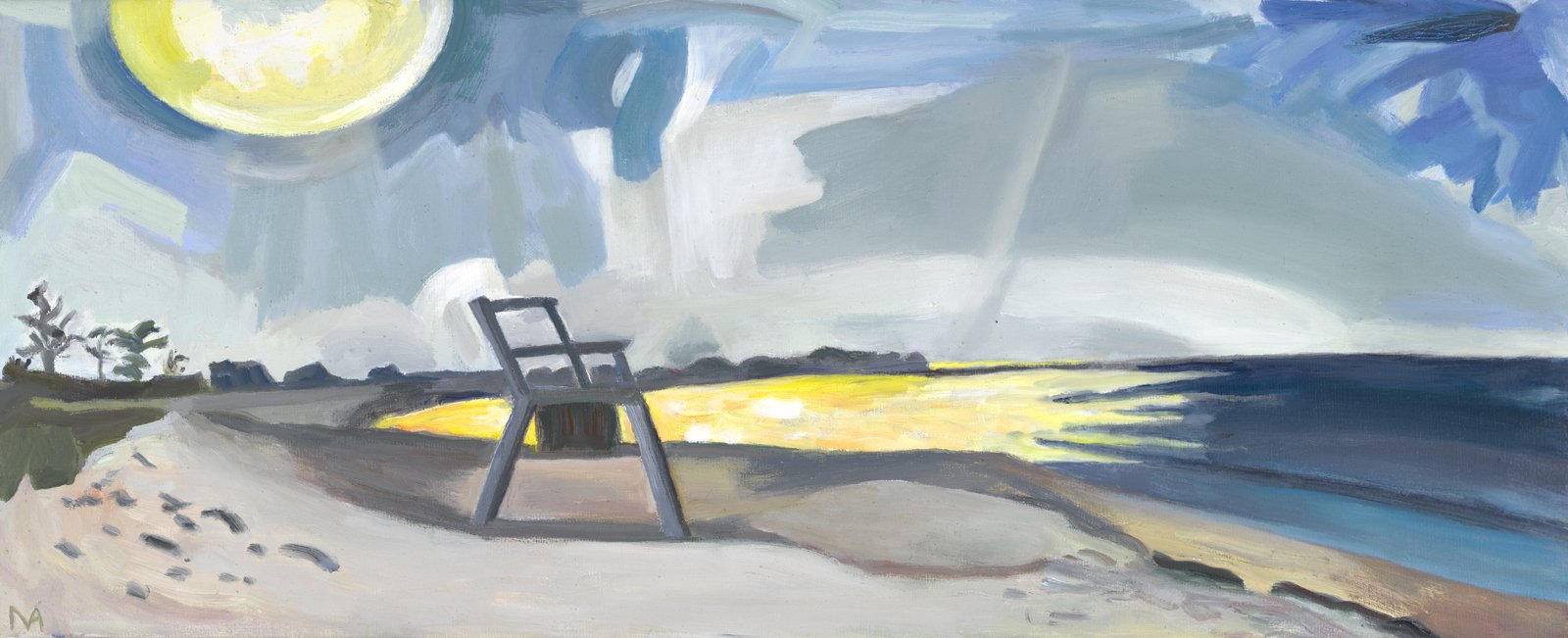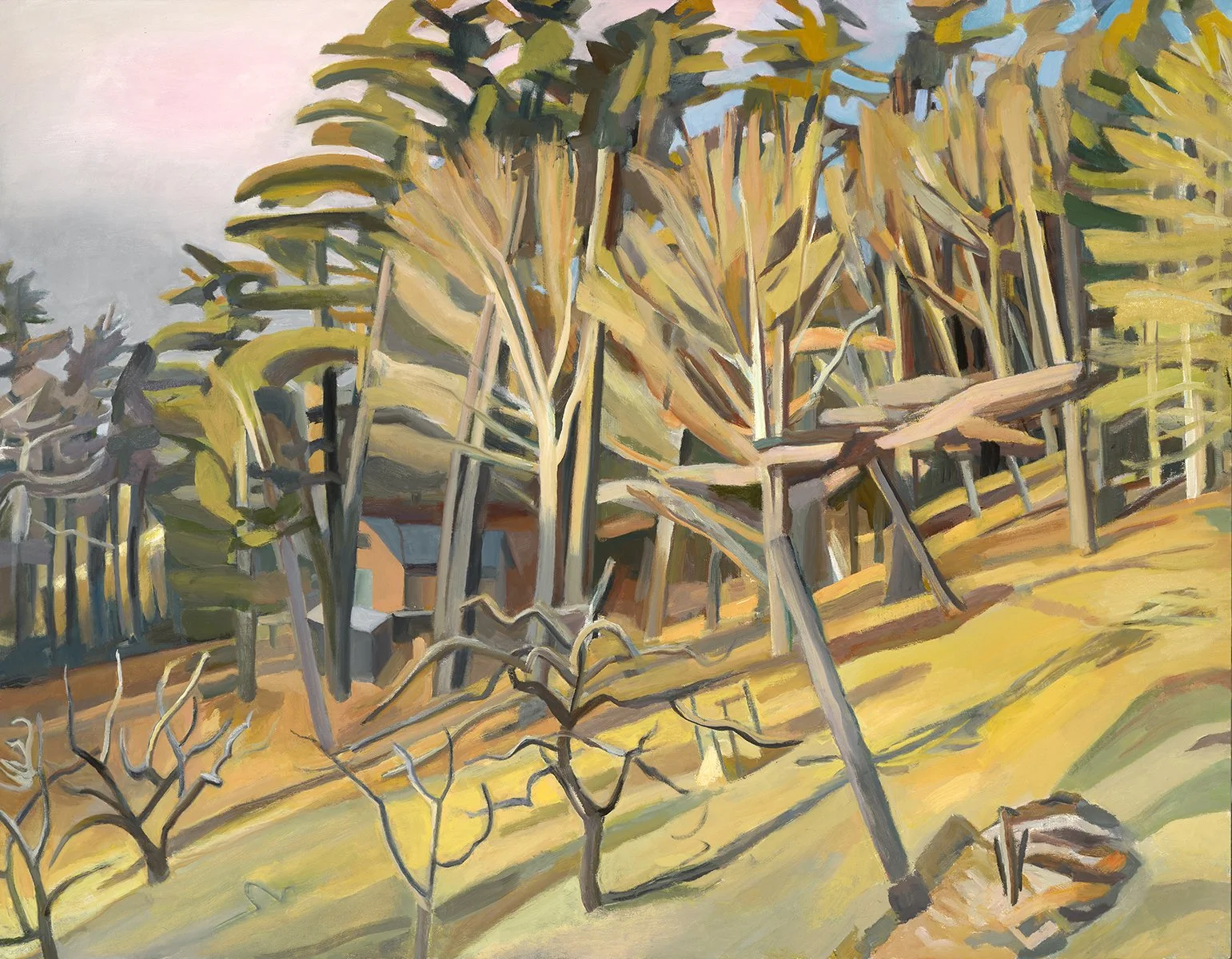Martha Armstrong: Recent Work
I asked Martha Armstrong to engage in a brief interview with me for the blog post for her show, Martha Armstrong: Recent Work. With just a couple of questions, we covered a few points, from her inspiration, to her process, to abstraction.
Eileen: Your smaller work, which feels like plein air pieces, reminds me of Bernie Chaet and even Charles Burchfield. In particular, Sunrise at Westerly, Sunrise, and To the Ridge, have this kinship with Chaet and Burchfield. Apart from the fact that they also painted the landscape, one main connection that I see between their work and yours is how structurally, there is an emphasis on shapes that both push against each other and lock into each other. Can you speak to your choices in how you structure your paintings? I also feel that they were tapped into the soul of the landscape, and that was really what they painted. I see this in your work, though you seem at times to bring it to another level of abstraction, particularly with your larger work. I would love to hear about your process--from studies to large paintings. Are the large paintings done in the studio or on site? Do you work from sketches?
Martha: I have always admired Burchfield–his ideas, his attitudes. He was an original. My subject is landscape, as was his. I paint still lifes and people, especially people I know. There is something I like about landscape–translating something huge to a small space, freedom to make it your own (you can’t remove eyes or arms from a figure without pain, or mess with the proportions of still life objects and be believed.). Landscapes invite abstraction. Invention.
Martha Armstrong, Sunrise, oil on canvas, 13x32 inches, 2025.
I paint from the subject as long as I can. Working on a large canvas, I have to choose a place that allows me to set up a painting table that is private enough so I don’t gather an audience. I need to let my brain work without being too conscious of it. It takes working hard for a while. Maybe weeks. Before I can step away.
I like the woods. I went to Michigan as a child where my grandmother had a cottage on a lake. The remoteness was beautiful and scary. Vermont gives me that.
Martha Armstrong, Vermont December 2023 I, oil on canvas, 48x60 inches, 2023.
I often make small studies of the landscape I am working from, maybe even away from the subject. To try to put it together in my head--not with my eyes. Maybe in a few strokes. In three colors. If I choose to draw, I use charcoal.
Martha Armstrong, Rain Comes Across the Desert, Charcoal on Paper, 18x24 inches, 2024.
Eileen: I would not have guessed that you paint your large paintings on site, and I find that extremely impressive. Do you finish your work in the studio? I am very curious about your process. Also, with respect to your smaller sketches--do you use those to make paintings in the studio?
Martha: I have outside spaces in Vermont where I can take large canvases. Often one of the first things I do is find the geometry of the canvas–the middle, the proportions of side to length, the diagonals. It helps to place things. Painting is a kind of invented shorthand (to me) because outside, the light changes, and as my energy is finite, I must get some big ideas down as fast as I can. On another day, I can focus on specifics–if I want. And I do work in my studio!
Martha Armstrong, Vermont December 2023 II, oil on canvas, 48x60 inches, 2023.
At the end I usually break with the landscape and wonder where all the glory of the landscape went. There is always tomorrow to try again.
I do smaller paintings to get my mind around the whole. How to get it down in one take. Out of my head.
Martha Armstrong, Governor Dick’s Woods I, oil on board, 14x11 inches, 2023.
Eileen: I love how you say "Landscapes invite abstraction. Invention." I could not agree with you more. Your work certainly veers towards abstraction, but is very much anchored in place. I am wondering if you could say more about that, perhaps with respect to your process.
Martha: Others have spoken of “in landscape begins abstraction.” Maybe beginning with the translation of space: from trips to the moon to Mars to Bennu, to beyond our galaxy; to inner space, as Freud and Jung and many others began to explore the unconscious, memory, and the examination of the experience of dreams. All things that we write about and talk about but have not addressed as reality until the 20th century. So, painters had to consider them. There’s a lot to deal with here and I think we do when we lose ourselves in painting and recognize, pictorially, ideas that startle us. We can be quick to correct–to “rationalize” these images, but that can be a mistake.
I’ll go back to being outside, preferably alone, in nature. I find it magical, exhilarating, inspiring.
Seascapes are different. I like getting to the beach before the sun is up. The landscape changes every five minutes. I used to scrape and try again. Now, I try to go with the changes.
Martha Armstrong, Low Storm Clouds, oil on canvas, 14x20 inches, 2025.
Plein air is being there. But the longer you paint somewhere, the more memory is involved. There is something magical about the ocean. Maybe because I didn’t go there and get in the water and listen to the pulse of the waves until I was in college. I studied horseshoe crabs in zoology before I found them on a beach. Saw my feet cut up with barnacles before I tasted the salty water like blood.
I like painting some familiar place again and again, in different weather, different times of year. It changes. And so do I.
Martha Armstrong: Recent Work, is on view from November 25 to December 27, 2025, with an opening reception on Thursday, December 4th, from 6-8pm.








